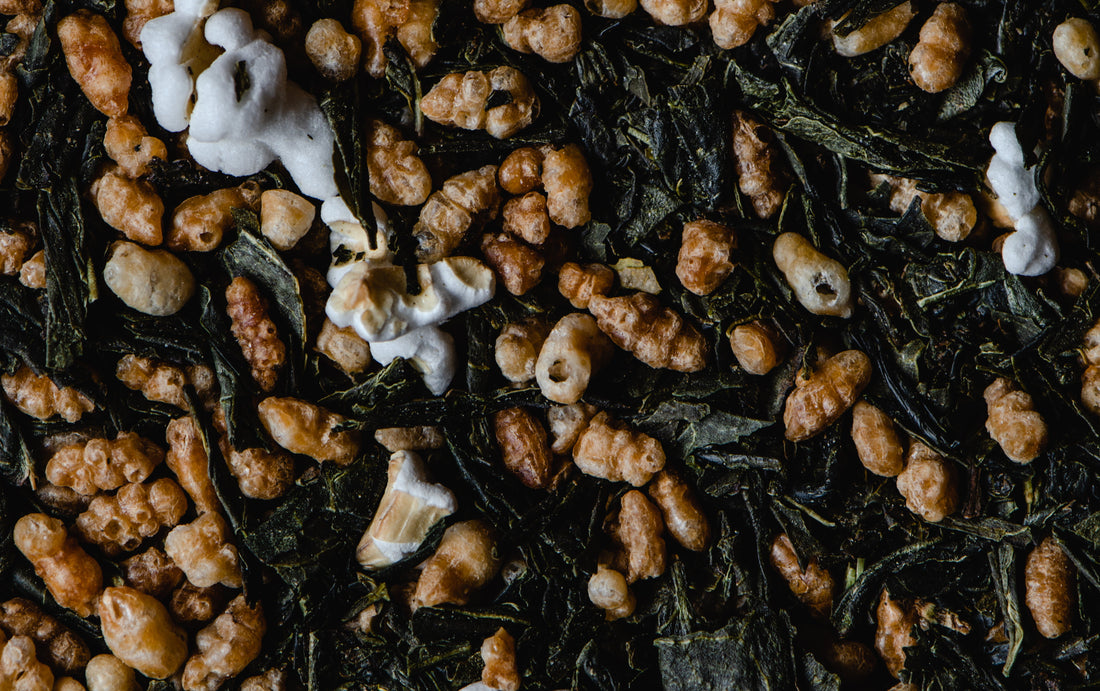What is Genmaicha and Its Place in Japanese Culture?
Genmaicha is a traditional Japanese tea made from green tea leaves and toasted brown rice, holds a cherished place in Japanese culture. Also referred to as "genmai cha" or "bancha genmaicha," this tea boasts a distinctive flavor, aroma, and color that set it apart from other varieties. The harmonious blend of earthy toasted brown rice and the refreshing notes of green tea creates a truly delightful cup. Genmaicha's rich history, unique taste, and health benefits make it obvious why genmaicha plays such an important role in Japanese Culture
Japanese culture is renowned for its diverse tea offerings, from Ichiban Dango, a traditional treat dipped in green tea, to Gyokuro, a premium Japanese green tea variety. Among these, Genmaicha stands out as a traditional Japanese tea crafted from green tea leaves and toasted brown rice. This tea, deeply rooted in Japanese heritage, is traditionally brewed and embodies a refreshing, soothing essence that's perfect for warm summer days.
Health Benefits of Genmaicha Green Tea
Genmaicha green tea has gained popularity in recent years due to its remarkable health benefits. This unique tea is made by combining popped, roasted brown rice with green tea leaves, resulting in a nutty flavor profile. Genmaicha has been used as an herbal remedy for centuries and has been shown to aid in weight loss, reduce inflammation, enhance cardiac function, and boost overall immune health. Rich in antioxidants, it also offers protection against certain types of cancer. Additionally, Genmaicha contains caffeine, providing an energy boost without the jitters associated with coffee or other caffeinated beverages.
History & Origins of Genmaicha Green Tea
The history of Genmaicha green tea dates back to Japan's Edo period (1603-1868) when a Zen monk ingeniously added roasted brown rice to green tea to extend its shelf life. This innovative recipe has been passed down through generations, evolving with slight variations over time. Today, genmaicha is one of the most popular types of green tea in Japan and is enjoyed by people from all walks of life. Its unique flavor and aroma make it a favorite among tea lovers around the world.
Genmaicha tea is often left to wilt and brew in a clay pot before drinking, which gives it its characteristic grey color. Traditional Genmaicha green tea has a monotonous, nutty aroma and flavor, with hints of roasted rice. To achieve this nutty flavor, small amounts of brown rice are mixed into green tea leaves during the roasting process. The addition of brown rice does not give Genmaicha its brown color, as some may assume.
The addition of green tea leaves to the roasted grain produces an increase in heat during the roasting process, which burns off some of the moisture in the leaves and produces carbon dioxide. This is why Genmaicha has a distinctive brown coloration despite not being roasted as long as other varieties.
Brewing Tips for the Perfect Cup of Genmaicha Green Tea
Genmaicha green tea is a unique blend of green tea and roasted brown rice. It has a pleasant, nutty flavor and is perfect for any time of the day. Brewing the perfect cup of Genmaicha green tea requires some knowledge and technique, but with the right tips, anyone can enjoy this delicious beverage. With these tips, you'll be able to make a delicious cup of Genmaicha green tea every single time!
So, what is roasted brown rice? Roasted brown rice is simply boiled, then dried until it gains a crunchy, cracker-like texture and the look of golden flakes. When this roasted brown rice is added to hot water for brewing Genmaicha green tea, the process releases as much caffeine and antioxidants as regular green tea leaves, which can rejuvenate and help us focus!
Now that we have discussed some important information about Genmaicha green tea, let's take a look at the brewing tips for making it perfect.
First, you should purchase whole leaves of Japanese-style sencha or yukari leaves from an authentic source. Avoid pre-ground bags to ensure better control over water temperature. Use boiling hot water and steep for 3-5 minutes to release maximum caffeine and antioxidants. Pay attention to these details when purchasing Genmaicha ingredients to brew it correctly:
- Avoid leaves oxidized in the sun, which can damage the flavor.
- Maintain a low water temperature, ideally between 150-155 degrees Fahrenheit, to avoid bitterness.
- Be cautious not to over-steep the leaves, as it can reduce caffeine and antioxidant content.
Taste & Aroma Profile
Genmaicha green tea boasts a unique flavor profile, characterized by its nutty taste and aroma derived from roasted rice. This tea combines the sweet nuttiness of roasted rice with the earthy notes of green tea, creating a balanced and refreshing flavor. You can enhance its taste by adding sugar for a Turkish coffee-like experience or milk for a smooth, creamy flavor complemented by the tea's lasting notes.
Conclusion
In conclusion, our exploration of Genmaicha has unveiled not only its delightful flavors but also its rich history and numerous health benefits. This Japanese treasure, composed of green tea leaves and toasted brown rice, offers a distinct taste that captivates the senses. Beyond its deliciousness, Genmaicha has transcended borders, becoming a favorite among tea enthusiasts worldwide.
Moreover, the health benefits it provides, combining green tea's antioxidants with the soothing qualities of rice, make it an excellent choice for those seeking a calming, nourishing beverage. Genmaicha is more than just tea; it's a reflection of Japanese culture, history, and innovation. When you savor a cup of this delightful tea, take a moment to appreciate centuries of tradition and the multitude of benefits it brings to your life. Raise your teacup and toast to this beloved Japanese classic, which continues to bring joy, health, and warmth to your tea-drinking journey.
